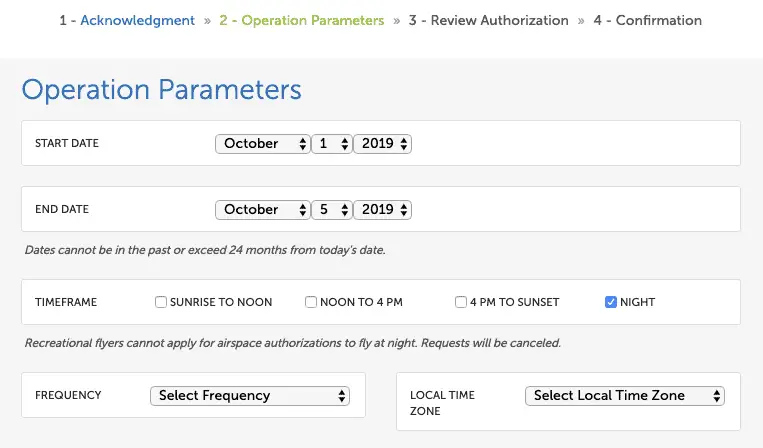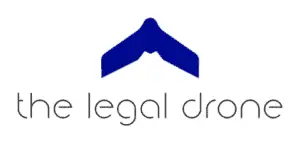Disclaimer: Okay guys, here’s my disclaimer. This article has affiliate links in it but using them costs you nothing. I only recommend products and services that I truly believe in and I have found to be the best solution to a drone problem. If I’ve provided you with any value in this website, this is a great (free) way for you to show your support. If you have any questions, here’s a link to my full disclosure.
The short answer is yes, hobbyist drone pilot night flight is legal.
But I’ll be honest, it was hard to find the right answer for September of 2019. I even ended up calling my local FAA office (FSDO) and asking to make sure I had the correct information. The rules for drones continue to change at a pretty rapid pace and this is no exception. For full insight into what will be the new rules for recreational drone pilots, check out our article.
Just to be clear, this article only addresses hobbyist drone pilot night flight and DOES NOT discuss that process that a Part 107 pilot would be required to go through to get a daylight operations waiver. If you’re interested in how to get a Part 107 waiver or authorization generally, I’ve got a separate article on this topic.
The FAA’s Take on Hobbyist Drone Pilot Night Flight
So, like I said, I reached out to my local FSDO and asked about whether hobbyist drone pilot night flight is legal. Again, the short answer is yes. I was told that you must be able to have visual line of sight on your drone (even if this means seeing the lights). But the FAA also wants you to be able to know the orientation of your drone, especially in relation to other aircraft or obstacles. Finally, you must be able to clearly see your surroundings, as well as avoid obstacles and other aircraft.
To confirm this, the FAA’s Drone Zone actually won’t even let a hobbyist drone pilot request an authorization at night. This screen shot below says “Recreational flyers cannot apply for airspace authorizations to fly at night. Requests will be canceled.”

The wording of this kind of makes it sound like hobbyist drone pilot night flight isn’t allowed at all, but after speaking with the FAA directly, this must mean that there is simply no regulation to be waived or authorization to be given.
All of that to say, I think there are some ways you can make sure you’re staying on the legal side of flying your drone legally at night as a recreational drone pilot. Below are my recommendations.
Follow Community-Based Organization Guidelines
In our article on the new recreational drone rules, I discussed how the FAA is looking to ensure that hobbyist drone pilots are operating “in accordance with or within the programming of a community-based organization’s set of safety guidelines.” Notice that there is no mention of specific “community based organizations,” just that you would need to follow the rules of one.
So, what is a “community based organization”? Well, the FAA says that part of the new recreational rules includes issuing guidance on how it will recognize community-based organizations. This means that other community based organizations could be created and have different rules about night flying. But at this point, the Academy of Model Aeronautics (AMA) already exists (and has for a long time). It is also well respected.
With this in mind, I took a look at the Safety Handbook for the Academy of Model Aeronautics. This is what it says about night flights.
Night flying requires a lighting system that provides the pilot with a clear view of the model’s attitude and orientation at all times. Hand-held illumination systems by themselves are inadequate for night flying operations and must be supplemented with other lighting systems.
And given what the FAA told me, this makes sense. We need to be able to have “a clear view” of the drone’s “attitude and orientation.”
So, what type of lighting system is sufficient?
Okay, so what does this mean? Does a hobbyist drone pilot night flight need to include flood lights illuminating the area where they are flying? This seems like it would be pretty restrictive. I’m picturing flying your drone around a lit up parking lot at night. I suppose this would work but would only allow you to fly up to the height of parking lot lights. Not much fun in that.
So, can a hobbyist drone pilot just attach a lighting system to the drone before using it at night?
This seems like the best solution. I tried searching for various strobes to put on your drone, and while there were a lot of options, most of them require somehow hard-wiring a strobe directly into your drone. I don’t feel comfortable with that, especially since I’ve seen my DJI drones easily fried. I’m not interested in a hard-wired solution. That said, there are now a lot of options for drone strobes, many of which will tell you that they are sufficient for Part 107 night flights. This is great, since the Part 107 requirements are more stringent than those for hobbyist drone pilots, requiring a strobe visible for up to 3 statute miles.
Here are a few options for drone strobes that could make your hobbyist night flight a success. I’d recommend getting at least two strobes, which would allow you to know the “orientation” of your drone even from a bit of a distance.
You could even do three strobes, two on the front and one on the back, so that you know whether the drone is facing you or away from you. Otherwise, you could run into that scenario where you can clearly see your drone, but aren’t really sure its orientation. This can happen even in the daytime and I know it is only made worse at night.
Firehouse Tech Strobe ($35-$40)
This drone strobe is super light (6 grams) and seems to be pretty basic, but exactly what you need. One thing I don’t love about the design is that although it is rechargeable via USB, it looks like it sticks to the drone with some 3M tape. I would hate to have to re-apply the strobe each time I was flying and it also might be a pain to have to keep your drone right next to an outlet each time you charge. Either way, putting two of these strobes on your drone should really help you see the orientation of the drone in flight, even from a distance. There is also a three pack available for $96.
Lume Cube Drone Strobe ($50)
This is the “name brand” version of a strobe but it does come with a couple of upgrades over the Firehouse Tech strobe above. First, it a 3M “dual lock” strip, which is like a patented velcro that allows you to attach and detach the strobe for charging. The problem I mentioned above is no longer a problem here.
The next functional difference is that each strobe comes with a red and green cap, which would allow you to place one strobe on the front and one on the back. You could color them differently so you knew which was which (although I’m not sure how well you’ll be able to see these colors at a distance). These covers are clipped on and removed easily.
Lastly, it comes with a housing, which looks nice but also incorporates a push button on/off. This way you can easily move through fast strobe, slow strobe or always on mode. This thing has enough battery to last for about two and a half hours on fast strobe mode, so it should be sufficient to cover whatever night flight you need it for. This strobe also comes is a three pack for $145.
I’ll be honest, I don’t love the fact that these strobes are so expensive, but I had a hard time finding an alternative that worked as well. If anyone has a better alternative, please let me know! Part of the equation for me isn’t just price, but safety. These two products are rated for Part 107 night flights and should be good to go on your hobbyist drone pilot night flight as well.
If you’ve made it this far and this article was helpful to you, I put out new content all the time and would love to be invited into your inbox. I hate emails that clutter my inbox, so I won’t clutter yours. Just helpful information about flying your drone legally. Sign up below if you’re interested.


